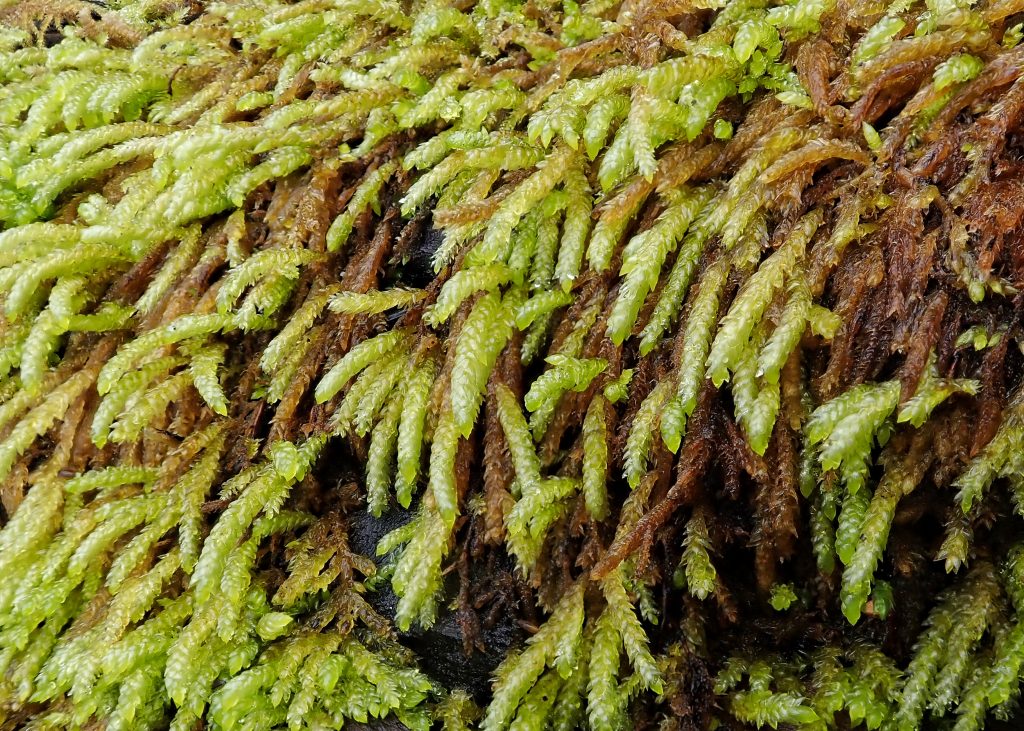
When I first saw this patch of moss, at Oxbow Regional Park along the Sandy River, during my weekly hike with my nbo Morgan, I thought it was Buckiella undulata, which I’ve been wanting to profile but haven’t seen since I started this website.
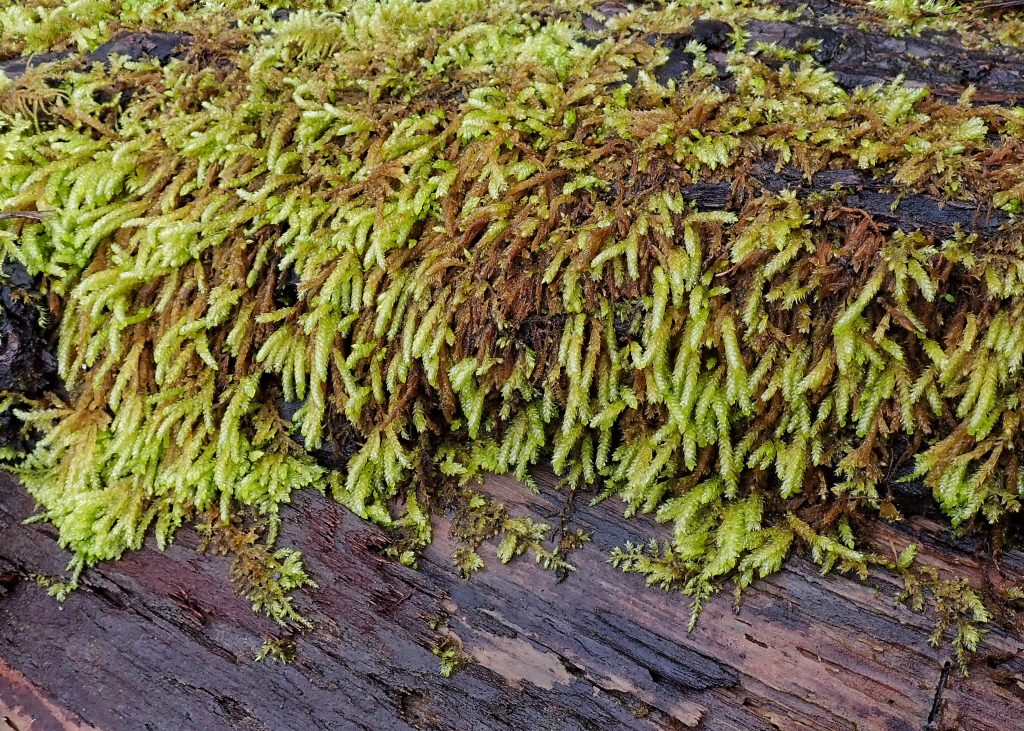
But then when I got close and realized how round and julaceous it was, as opposed to the rather complanate (in two rows) and imbricate (overlapping) leaves of Buckiella, I realized this was something completely unfamiliar to me, and I snagged a tiny shoot whilst snapping photos.
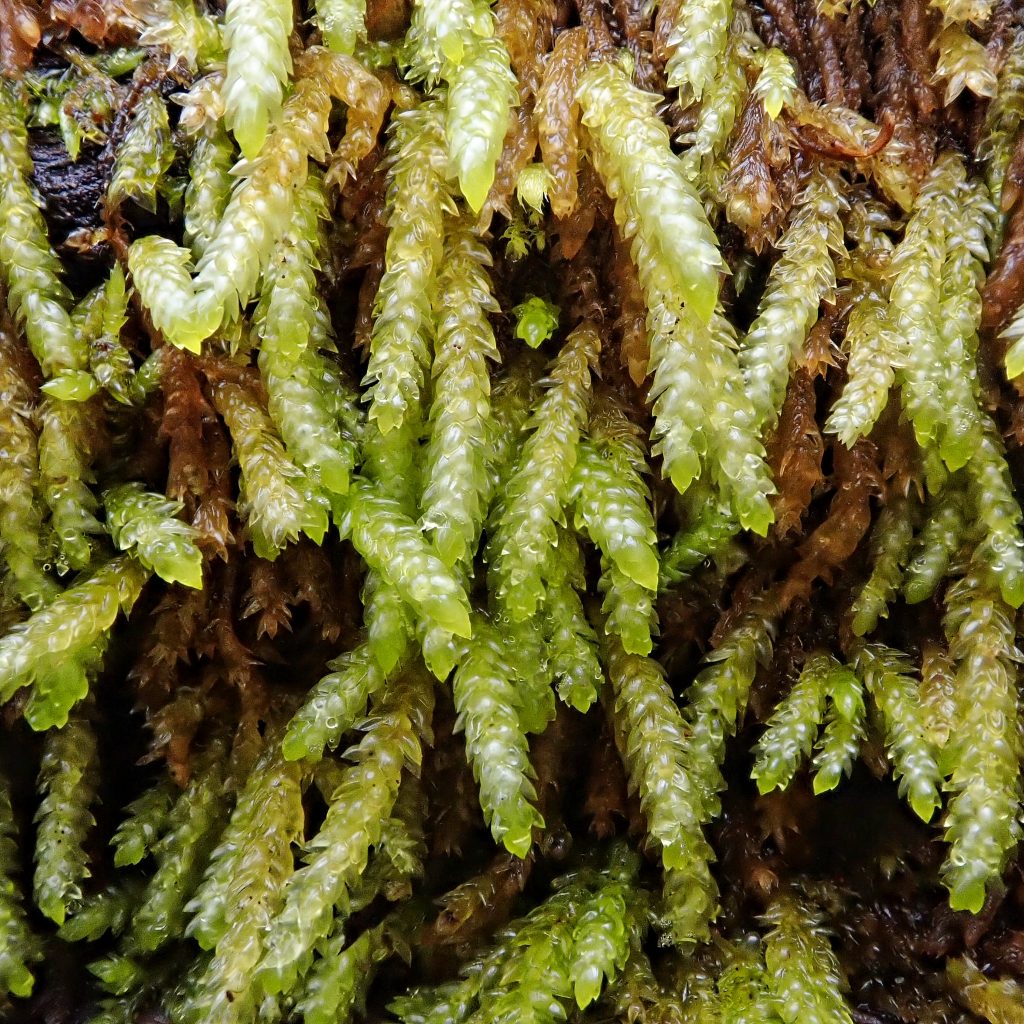
Paging through photos in ‘Common Mosses of Western Oregon and Washington’ (McCune/Hutten;2018) led me to Scleropodium, after an unproductive detour into Pseudoscleropodium, and the straightforward key in this dissertation by B. E. Carter (2012), as well as his helpful mention of S. cespitans having an unusual-for-Scleropodium fondness for a wood substrate, got me to the finish line. Always fun to find and share a genus that is new to me.
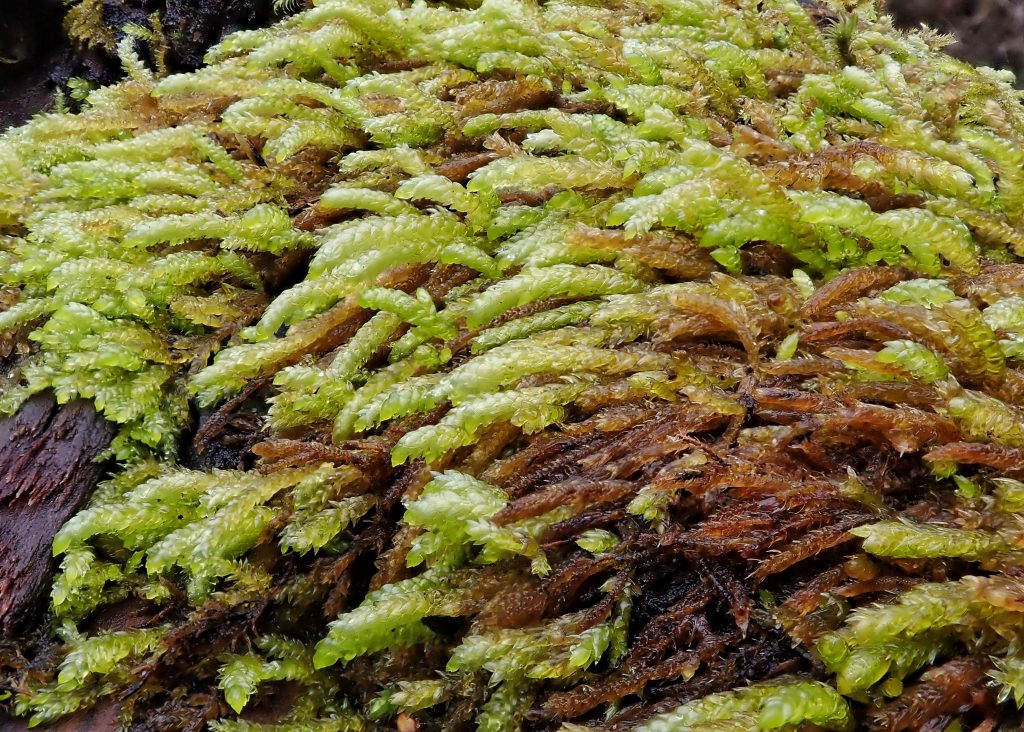
Description– Shoots light green to olive, julaceous, prostrate and pleurocarpous, forming dense but thin mats; leaves concave, ovate to ovate lanceolate, usually < .7mm wide; costa long (about 3/4 leaf length), margins smooth or mildly serrated near the apex; alar cells quadrate to rectangular, and extend further up the leaf at the margin; seta stiff, capsule erect.
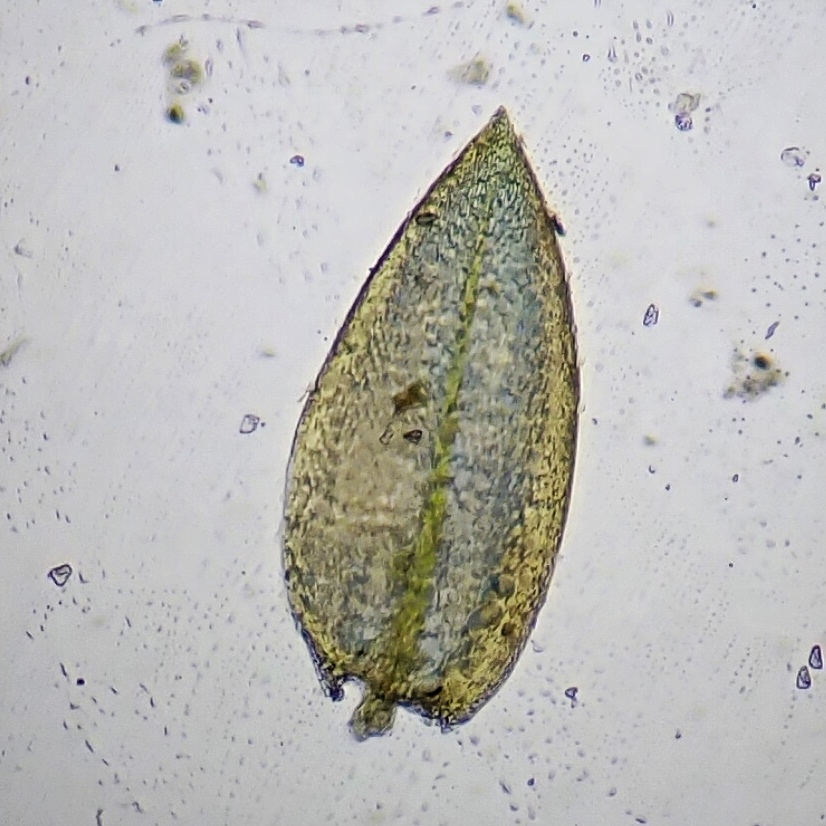
Similar species– All other Scleropodium are found mostly on rock or sand; S. touretti has leaves >.8mm wide, capsules horizontal; S. obtusifolium and the newly described S. occidentale are aquatic and are submerged for at least part of the year; Buckiella undulatum is larger, more complanate, and is a whiter green.
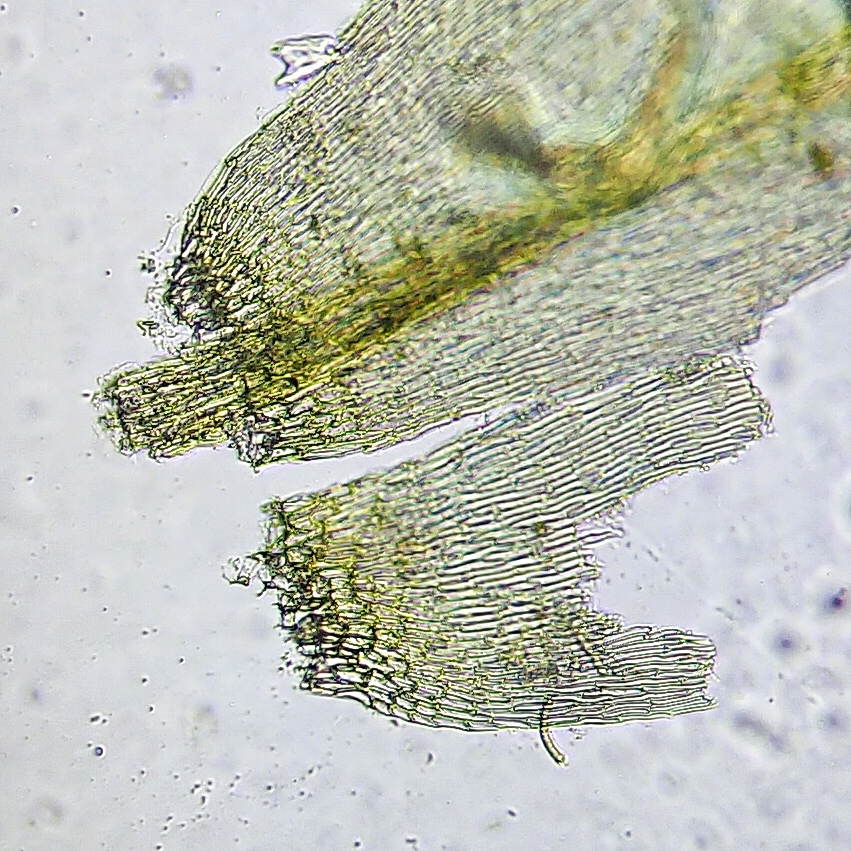
Habitat– This is the only Scleropodium with a preference for wood substrate, and is found on logs, tree trunks, and tree bases, humus, soil, and occasionally on rock, up to 4000’.
Range-Western North America and western Europe; in our region it is most common west of the Cascades; restricted to forested riparian corridors east of Cascades.
Reproductive timing– Spring to summer
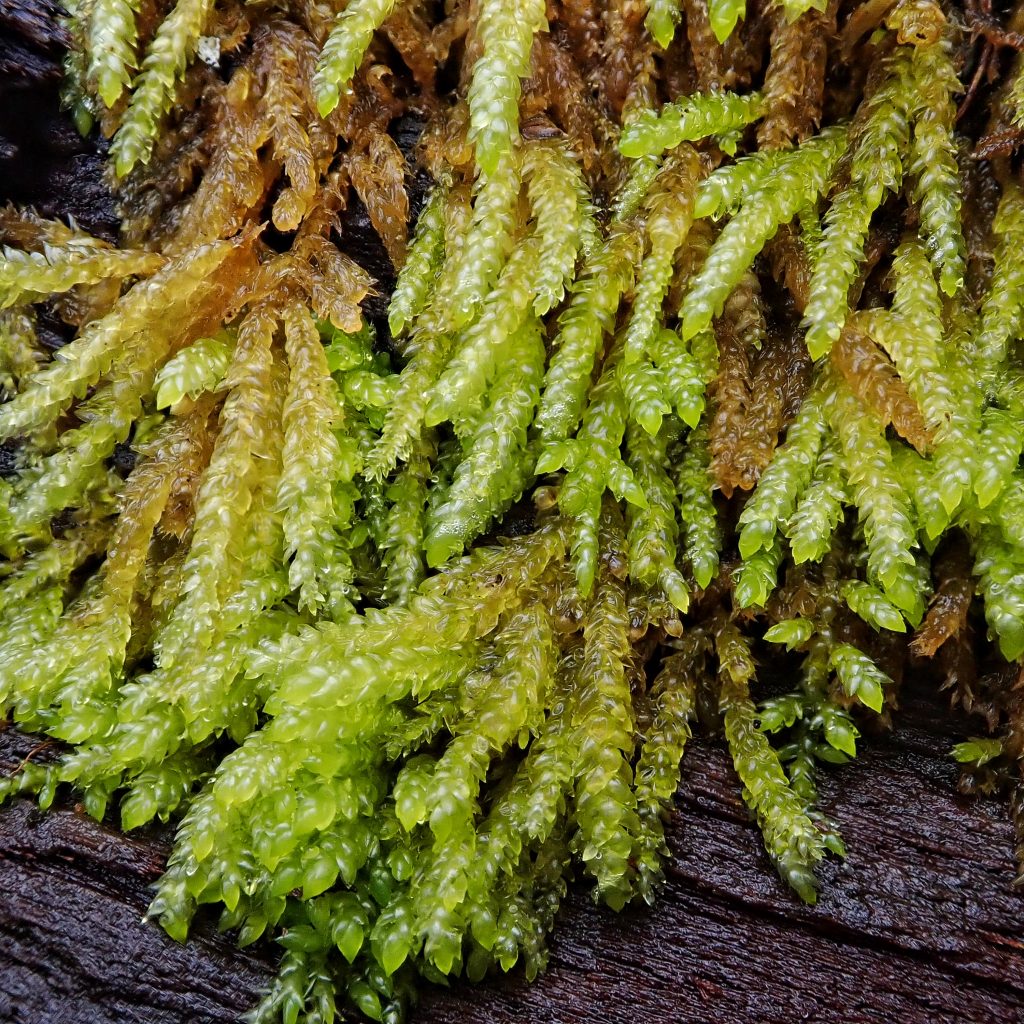
Etymology of names– Scleropodium is from Greek and translates as ‘hard foot’, alluding to the stiff seta supporting the capsules of this genus. The specific epithet cespitans means ‘turf like’ in Latin, and refers to the tendency of this species to form dense mats.
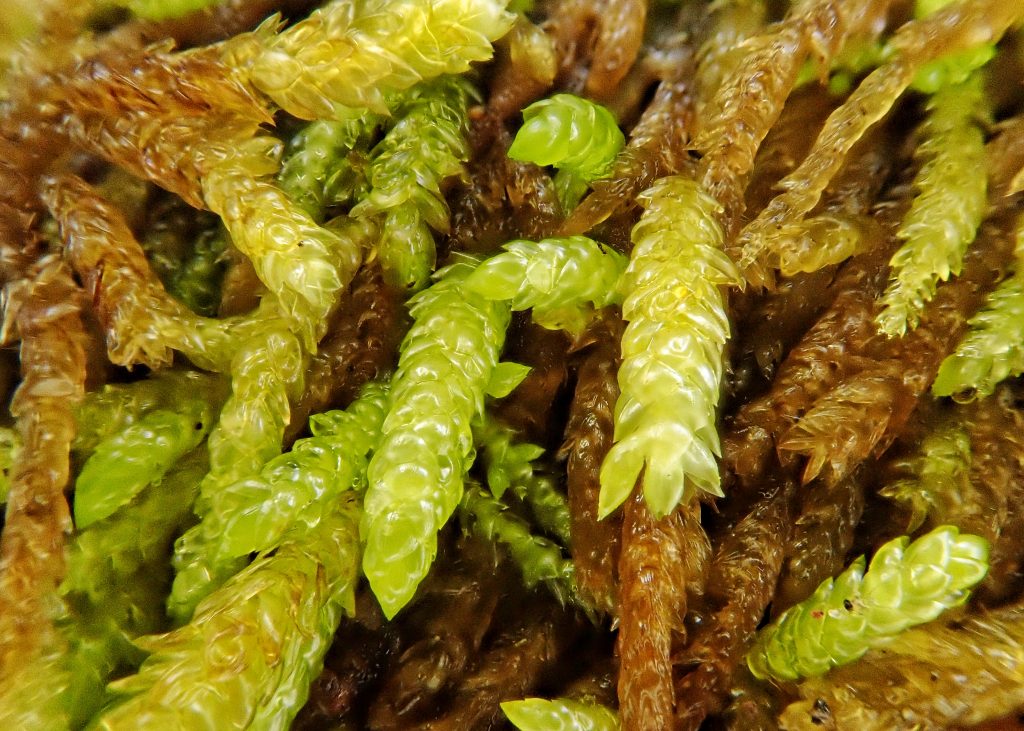
http://www.efloras.org/florataxon.aspx?flora_id=1&taxon_id=250099370
https://escholarship.org/content/qt9991600w/qt9991600w_noSplash_88a42a6ec2e9ac1b3f50c2d584861274.pdf
https://websites.rbge.org.uk/bbs/Activities/mosses/Scleropodium%20cespitans.pdf
http://linnet.geog.ubc.ca/Atlas/Atlas.aspx?sciname=Scleropodium%20cespitans
https://www.jstor.org/stable/24546227?seq=2#metadata_info_tab_contents
https://www.naturespot.org.uk/species/tufted-feather-moss
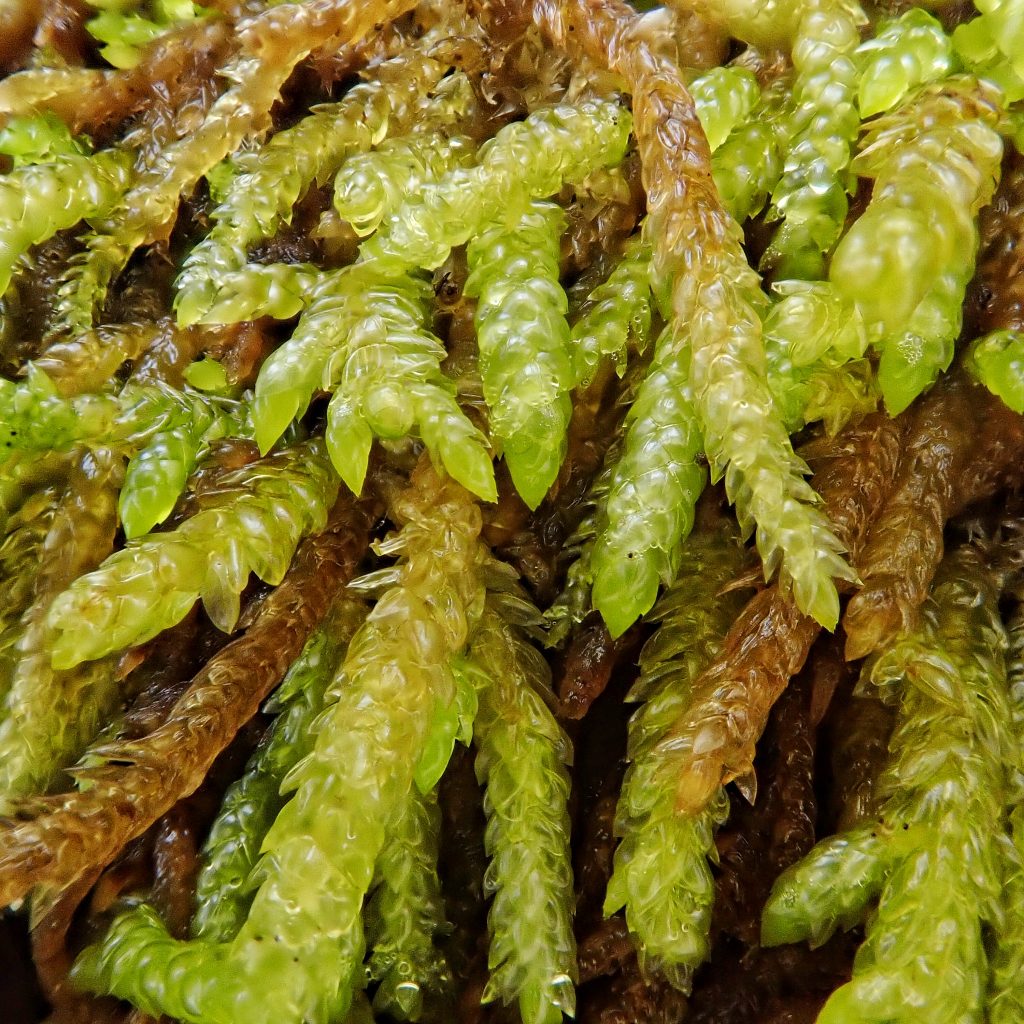
I see this a lot on rock (and cement) on southern Vancouver Island. And usually with stubby shoots.
Cool! I read that it often has shorter shoots. I wonder if that’s a function of being on stone.